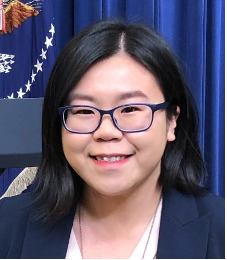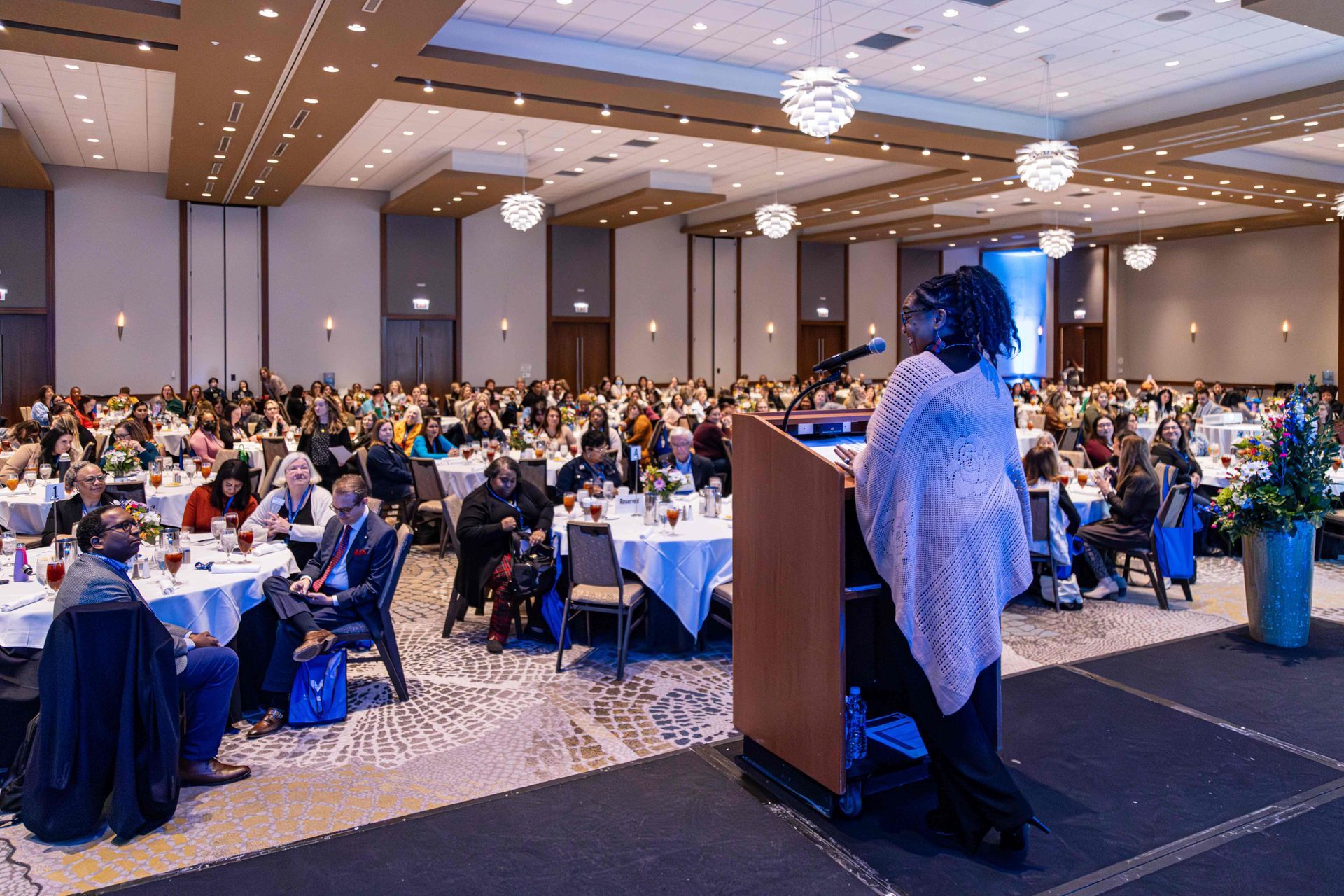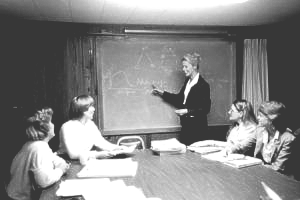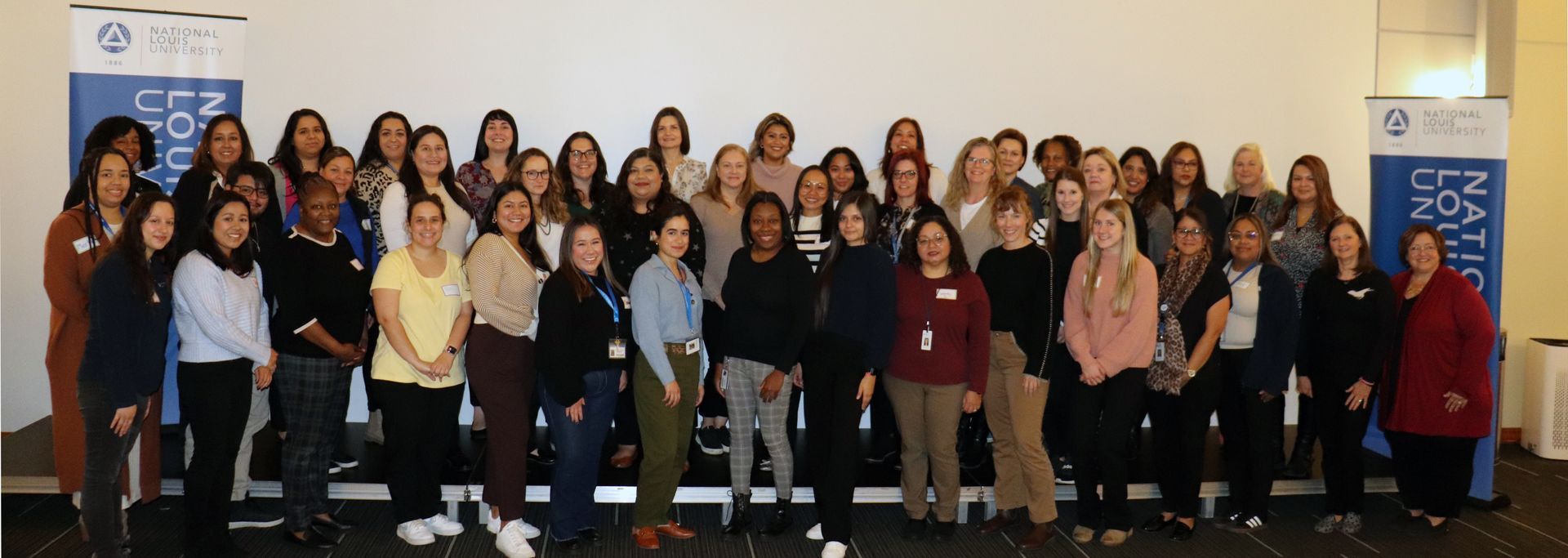BY Lisa M. Downey | August 20, 2025

Sim Loh is a family partnership coordinator at Children’s Village, a nationally-accredited Keystone 4 STARS early learning and school-age enrichment program in Philadelphia, Pennsylvania, serving about 350 children. She supports children and families, including non-English speaking families of immigrant status, by ensuring equitable access to education, health, employment, and legal information and resources on a day-to-day basis. She is a member of the Children First Racial Equity Early Childhood Education Provider Council, a community member representative of Philadelphia School District Multilingual Advisory Council, and a board member of Historic Philadelphia.
Sim explains, “I ensure families know their rights and educate them on ways to speak up for themselves and request for interpretation/translation services. I share families’ stories and experiences with legislators and decision-makers so that their needs are understood. Attending Leadership Connections will help me strengthen and grow my skills in all domains by interacting with and hearing from experienced leaders in different positions. With newly acquired skills, I seek to learn about the systems level while paying close attention to the accessibility and barriers of different systems and resources and their impacts on young children and their families.”

Copyright © Dimensions Educational Research Foundation All rights reserved. A single copy of these materials may be reprinted for noncommercial personal use only. Visit exchangepress.com or call (800) 221-2864.
by Lisa M. Downey
Elizabeth Harrison once said, “There is nothing great accomplished in this world without faith in its greatness.”
Harrison, an educator and advocate for the kindergarten movement in the United States, settled in Chicago in 1885 and worked alongside other visionary women of the time to create a training school for kindergarten teachers and mothers that, at the time, was a truly radical idea. The prevailing thought of the day was that children should not attend school until they were at least 6 years of age. In the U.S., due to poverty and a gross lack of child labor laws, children were usually engaged in farming, industry, or other work-based activities within the home. Also, in the late 1800’s, most teachers were white men. Further, it was commonly believed that, if you were wealthy, a woman’s place was in the home and in support of society through philanthropic activities. If you were not wealthy, you were likely working in factories, farms, or other domestic forms of employment. The idea that women would be teachers was ludicrous to some. Harrison sought to change that, by empowering women and mothers to connect with their children in ways that were play based, focused on holistic development, and based on the theories and practices of Owen, Pestalozzi, Froebel, and Montessori.
In 1891, Miss Harrison’s Training School was incorporated as the Chicago Kindergarten College. Harrison had very strict requirements for her students. She required a high school diploma, and her program was three years in length. Harrison is often credited with being one of the first to maintain high standards and uniform training for teachers in early childhood. Later, in 1930, Harrison’s College became the National College of Education, introducing the first four-year training program for teachers in Illinois. The College eventually evolved into the present-day National Louis University (NLU), an urban institution that focuses on innovation, access, excellence, and equity. Today, NLU embodies Elizabeth Harrison’s spirit in many ways, from maintaining high standards of excellence to finding ways to innovate, despite the changing tides of society, resources, and political ideologies.
Elizabeth Harrison is the reason I came to NLU as a young professional seeking a master’s degree. After being a childcare center director for a number of years, I saw the difficulties facing our workforce and programs across Chicago, and I wanted to make a difference. I enrolled at NLU after researching my options in Chicago and decided on NLU after learning about Harrison. After Harrison’s death, a close friend and correspondent of hers said, “Her keen sense of justice made her staunch in defense of what she believed was right.” I thought, “This place seems to have change in its DNA—I want to be a part of that.”
When I was ready to leave direct service behind, I went in search of training opportunities to help me plan my next step. It was then that I came across a training course being offered by the McCormick Center for Early Childhood Leadership at National Louis University, aptly called “Next Step”. NLU again.
During that training I met Dr. Paula Jorde Bloom, the founder of the Center for Early Childhood Leadership. Jorde Bloom started the Center in 1985 in an effort to identify, define, and support the competencies of early childhood program administrators and to bring credibility to the importance and complexity of the administrator’s role. While I was taking the Next Step training, Paula passed along two important lessons. The first was that advocacy takes on all forms—it can be in your face and loud, or it can be quieter and more systematic. The second was that when you diffuse your work across many areas of focus it becomes diluted. She told me to find my passion and stick with it—I would make more impact that way.
Wise Words
My training with Dr. Jorde Bloom and the Center led me to eventually becoming an ECE faculty member at NLU. I chose NLU for my next professional home because I knew what was at the heart of NLU—the mission and vision of Elizabeth Harrison. I also knew that focusing on preparing the next generation of teachers and leaders in Early Childhood Education and Care (ECEC) would speak to Paula’s advice for me. I could focus on where my passions lie and where I thought I could enact the most change.
Paula Jorde Bloom once said, “A problem is simply the gap between what is desired and what currently exists.” During my years at NLU as faculty and an Associate Dean, I began to see a pattern. We could train and graduate countless professionals, but the landscape remained the same. Teacher turnover continued to be high. Wages continued to be subpar, and accessible preparation opportunities for the field were in low supply. Further, there did not seem to be much research or discussion about how to support a troubled and flailing field. An idea began to take shape and bloom.
Because of our prominence and collective work in the field of ECEC, a group of us at NLU began talking about how to better impact the profession in lasting ways that could help address the ills of the landscape we found ourselves in. Our first goal was to bring all the ECEC assets at NLU under one figurative umbrella to create a more dynamic impact on the field. We needed to get everyone together in the same room and on the same page. As a result, we recognized that it is not enough to train teachers and leaders, we must continue to cultivate the landscape through applied research, community and policy engagement, and innovation that drives excellence for our entire profession.
These early talks led to the birth of a new enterprise at NLU. Thanks to generous funding from the Robert R. McCormick Foundation, The McCormick Institute for Early Childhood was launched in the academic year 2024–2025.
“The next era for the ECEC profession has arrived.”
Personally, I was thrilled to be named to the position of Executive Director, as it allowed me to contribute to the rich legacy of ECEC-related work at NLU, and if I got to walk in the footsteps of Elizabeth Harrison and Paula Jorde Bloom— even better!
Today NLU trains and prepares more ECEC professionals than any other institution in Illinois. The Center for Early Childhood Leadership is the flagship program of the Institute and is nationally recognized as the premier organization for advancing leaders as levers of quality in ECEC. This year, the Institute will launch an applied research agenda designed to impact the preparation, sustainment, and advancement of the profession. We will also use our research to engage community partners, advocates, and policy makers as we work to create lasting change for the profession that positively impacts children, families and communities. We will continue to lead innovation for the field of ECEC with programming that pushes the limits of what has been thought to be standard practice for the preparation of our field, while focusing on those areas of preparation where there are the most critical gaps and needs.
The next era for the ECEC profession has arrived. The McCormick Institute for Early Childhood at National Louis University is excited to be a vital part of the continued conversation. So am I.
References
Encyclopædia Britannica, inc. (2024, December 23). Kindergarten. Encyclopædia Britannica. britannica.com/ topic/kindergarten
Harrison, E. (1922). The Unseen Side of Child Life: For the Guardians of Young Children. Elizabeth Harrison’s Writings. 4. digitalcommons.nl.edu
Snyder, A. (n.d.). Dauntless Women in Early Childhood Education: 1856–1931. ERIC. files.eric.ed.gov
University, N. L. (n.d.). National Louis University: Our history. National Louis University. nl.edu
Dr. Lisa Downey is the Executive Director of the McCormick Institute for Early Childhood at National Louis University (NLU), where she oversees all programming and operations. She leads a team of 75 staff dedicated to advancing the Early Childhood Education and Care (ECEC) profession through leadership, applied research, community and policy engagement, and innovative professional preparation. With over 35 years of experience in the field, Dr. Downey’s career includes roles as a toddler classroom teacher, child care center director, Child Care Resource and Referral (CCR&R) resource developer, training coordinator, and Director of Provider Services at Illinois Action for Children, where she managed CCR&R professional development for the Chicago area. She has been a faculty member at NLU for more than 14 years. Today, Dr. Downey focuses on addressing the complex challenges facing the ECEC workforce, creating scalable solutions that support the profession and ensure children, families, and communities thrive now and in the future.
© 2025 Dimensions Educational Research Foundation. All rights reserved. Exchange Press is an initiative of Dimensions Foundation, a 501(c)3 non-profit organization. Learn more at exchangepress.com.




